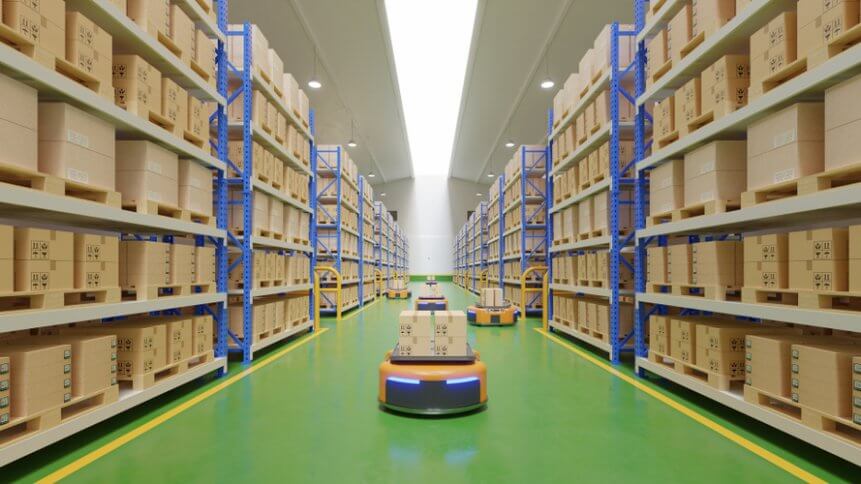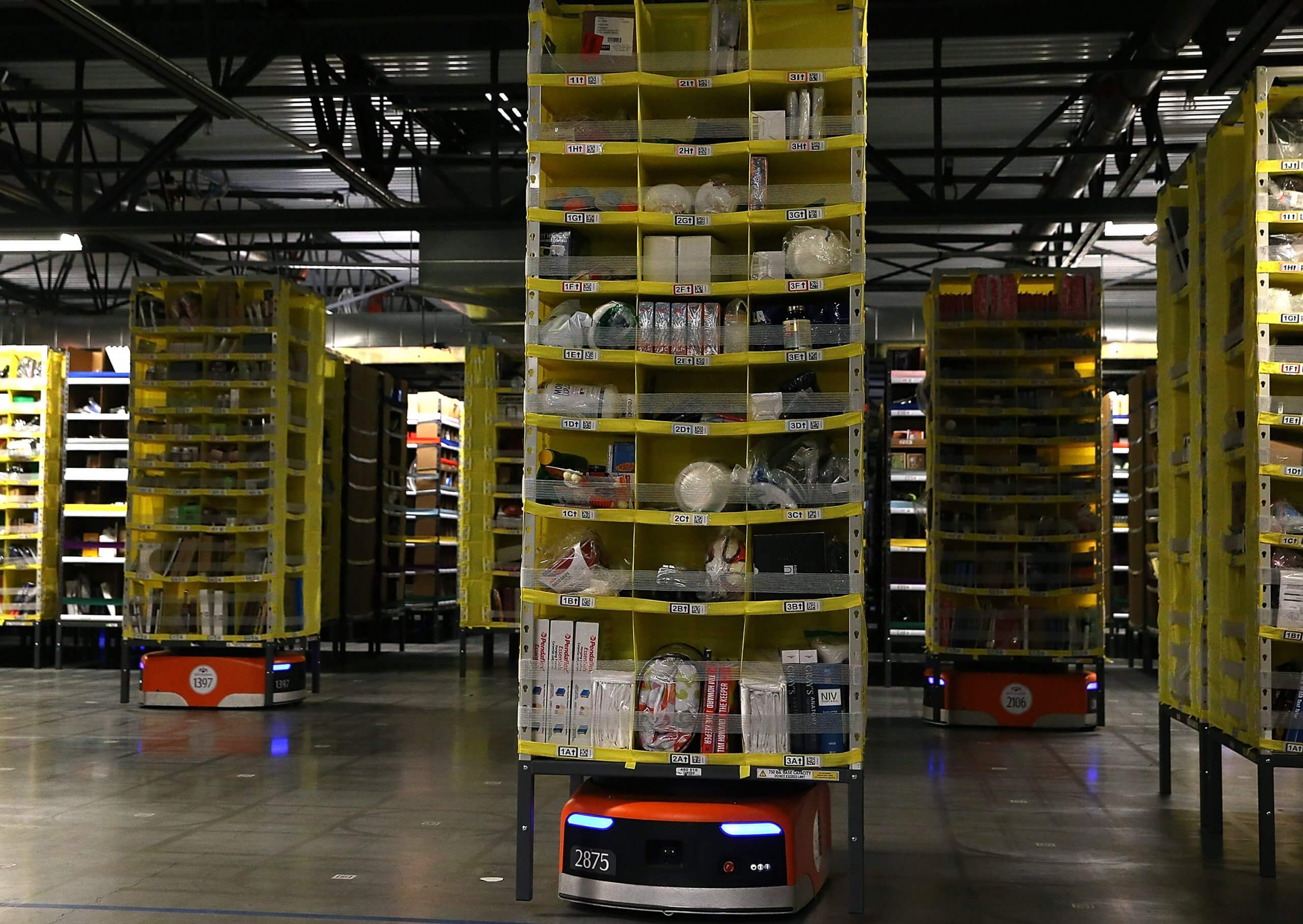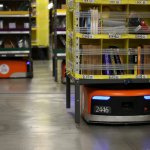Why AGV robots are taking over our warehouse floors

- Investment and funding continues to pour into the AGV industry, which is expected to become US$2.74 billion market by 2023
- The disruption caused by the pandemic has only accelerated investments
- But what are these machines, and how will they impact the industry’s human workforce?
Many of the world’s largest, most successful businesses today win in logistics. It’s in warehouses and transportation where business turns over, where minutes are made and dollars saved around the clock.
Given such demands, the logistics sector is a core focus of physical automation, and rapid advances in robotics, artificial intelligence, computer vision, and edge computing capabilities are all resulting in machines that can potentially think, see, hear, and move with much more fluency than human handlers.
Automated guided vehicles (AGVs) are robots that traditionally operate by following marked lines or wires on the floor or navigate through the use of radio waves, cameras, magnets, or lasers. AGVs are now a common sight in industrial settings, moving anything from pallets onto the back of a truck, to shifting shipping containers at logistics hubs. These systems have existed in various forms for decades, but between 2007 and 2011, automated guided vehicles (AGVs) began using computer vision, localization, and mapping capabilities for navigation. These advancements mean that AGVs became easily reprogrammable without the need for new cables, magnetic strips, reflectors, or infrastructural changes in the layout of the vehicle’s path.
As technology advances, bringing greater flexibility, ease of use, and efficiency, industry leaders such as e-commerce and logistics giant Amazon are locked in competition for an AGV opportunity likely to become a US$2.74 billion market by 2023. AGV firm Seegrid — which develops a pallet truck that can transport 8,000 pounds of goods and a tow tractor able to shift 10,000 pounds — just recently added a further $US27 million to its recent equity funding, closing off the round at US$52 million and taking its total to US$150 million, with a valuation said to be more than US$400 million.
The supply chain disruption of 2020 is only accelerating these kinds of investments and market growth.
A spur in automation
Despite widespread supply chain disruption and closures in recent months, innovation within the AGV and robotics sector has carved through unperturbed. A combination of rising demand for e-commerce, emerging multichannel distribution channels, globalization of supply chain networks, increased adoption of micro-fulfillment centers, and expectations for faster deliveries among customers are leading many firms to invest in technologies that can augment operations and that are more resilient to disruption.
The boom in e-commerce is compounding the major labor challenges faced by the global logistics industry. Not only are shipment volumes growing rapidly, but online retail also typically requires more logistical work per item than brick and mortar retail. Indeed, online purchases require individual picking packing and shipping, as opposed to the bulk transportation models of traditional brick & mortar retail. According to an IDC supply chain survey, 70% of companies said robotics will be important or very important within the next three years.

Kiva robots move racks of merchandise at an Amazon fulfillment center. Source: AFP
Not only do these machines bring benefits in efficiency and productivity, but systems also interact with the environment relaying the position of the vehicle to the dispatching systems in real-time, which greatly enhances the efficiency of production lines and warehouses. AGV systems can be integrated into warehouse management and enterprise resource planning software, combining logistics and production processes to enhance operational efficiency. Companies do not have to waste time on manual inventory tracking and can eliminate expensive errors while streamlining processes such as inventory and materials orders.
The impact on jobs
With all eyes turned towards automation technology, there remain lingering concerns over the longer-term impact on jobs.
However, in many markets there warehousing and logistics industries are experiencing significant labor shortages, which threaten their ability to cope with demand and scale. These year-round shortages are felt especially hard during a business’ peak period, those times of the year when sales spike, demand is through the roof and orders seem to be flooding in, consistently.
Low unemployment rates can factor here, along with aging workforces posing a challenge in attracting new talent to this type of work — this has been a significant problem for the US trucking industry.
In reality, a greater push towards automation will likely both kill and create jobs, with human workers made redundant in certain spheres, and new roles cropping up elsewhere. AI and machine learning technology’s potential lies in handling repetitive tasks focused on precision and speed, providing workers with opportunities to focus on more complex tasks that could involve working with large assemblies or specific roles such as ‘robot fleet manager’.
As of last year, e-commerce giant Amazon had 100,000 robots operating across its fulfillment centers. Kiva Systems’ shelving robotics systems — acquired by the firm in 2012 — serve as a backbone to its warehouse operations. Nonetheless, Amazon just recently announced the opening of 100,000 new vacancies to cope with demand ahead of the holiday season.
While it is still unclear as to the impact robotics and advanced AGVs will have on the labor market, there will almost certainly be demand for skill sets that enable systems to run smoothly. A recent report by the International Federation of Robotics (IFR) notes that there will be an operational stock of almost 4 million industrial robots globally by 2022 and predicts a high demand for robotic skills as part of the post-pandemic recovery process.










